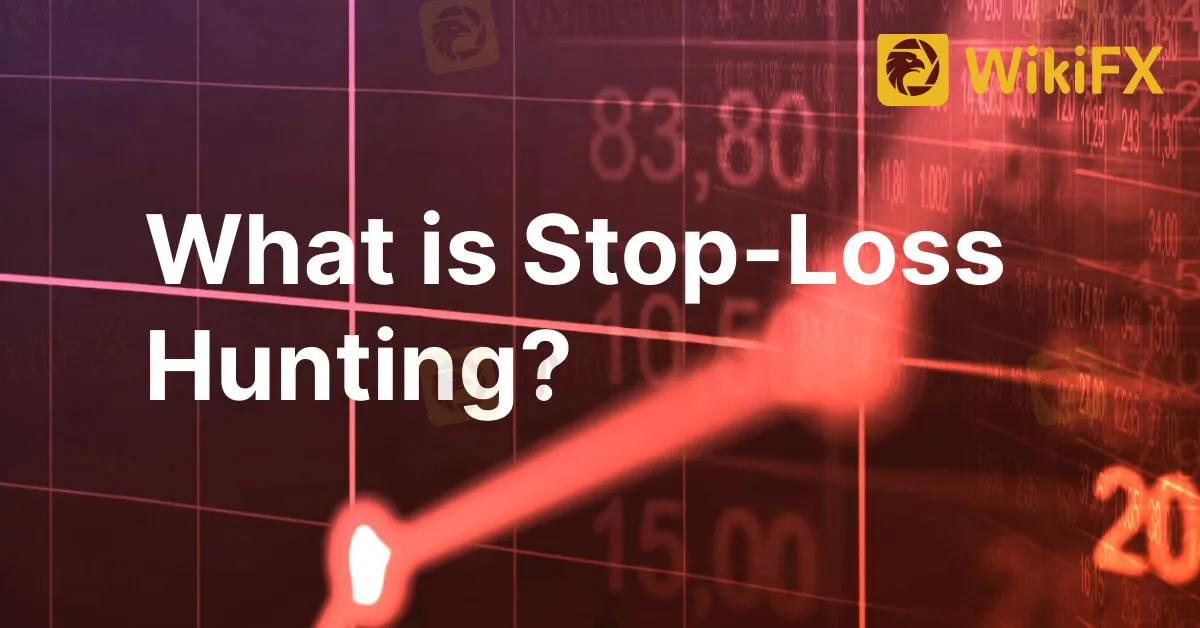简体中文
繁體中文
English
Pусский
日本語
ภาษาไทย
Tiếng Việt
Bahasa Indonesia
Español
हिन्दी
Filippiiniläinen
Français
Deutsch
Português
Türkçe
한국어
العربية
What is Stop-Loss Hunting?
Abstract:Stop loss hunting is a term often used in the financial markets to describe a particular market action where traders' stop loss orders get triggered, causing them to exit their positions.

Stop loss hunting is a term often used in the financial markets to describe a particular market action where traders' stop loss orders get triggered, causing them to exit their positions. While some traders may use this term in an exaggerated manner when things do not go their way, stop loss hunting is a real phenomenon that exists as a counterparty risk in the financial markets. It is essential for traders to understand this concept precisely to avoid its dangers and apply their knowledge to their trading strategies and risk management of open positions.
However, not all market movements occur because of stop loss hunting, and it is crucial for traders to understand its reasoning and mechanics. The practice of stop loss hunting and its evidence often remains a matter of opinion as liquidity providers are obligated to provide tradable prices but not move them in a smooth incremental manner. It is similar to gravity in that you cannot see it, but you know it is there.
Stop loss hunting is usually attributed to the largest financial institutions, including major brokers, dedicated market-making liquidity providers, and speculators. There are several complex reasons why a market suddenly moves through a technical price level, but it is not always intended to target an individual client with a stop-loss order. Large financial powers may have enough cash to cause an imbalance in the marketplace and momentarily push a market price to a level where many stops are likely to be placed and, therefore, triggered by the move.
Stop-loss hunting is undertaken to knock active positions out of the marketplace and can weaken support and resistance levels that have established themselves as key resistance points. Market makers may use this practice to generate profits and protect their active positions against developing trends. Forex and commodities are two of the more active asset classes affected by stop-loss hunting, but it also occurs in other assets where derivatives allow long and short positions.
Stop losses are used by many types of speculators, including day traders, to risk manage their positions against sudden reversals of trends. If a day trader is using a stop loss as protection, they may choose a technical indicator level that has displayed durable support or resistance within a certain timeframe.
The broad financial markets are awash with stop losses, and institutions via large brokerages are well aware of potential accumulation points, even without seeing the brokers order book, as they have a fair idea where client stop losses are likely to be placed. Brokerage firms that act as market makers and are caught with a trading position that is not balanced may have the incentive to eliminate positions to create financial safety for their institution. However, such practices can generate unwarranted apprehension among small traders. Nonetheless, brokers with a significant institutional presence can theoretically undertake a stop-loss hunting expedition, and some may resort to such practices when deemed necessary.

Disclaimer:
The views in this article only represent the author's personal views, and do not constitute investment advice on this platform. This platform does not guarantee the accuracy, completeness and timeliness of the information in the article, and will not be liable for any loss caused by the use of or reliance on the information in the article.
Read more

Why More People Are Trading Online Today?
Discover why online trading is booming with tech, AI, and a push for financial freedom. From stocks to crypto, it’s a thrilling hustle for all.

High Return Traps? WikiFX’s Complete Scam-Busting Handbook to Avoid Financial Fraud!
Financial scams are evolving faster than ever, and fraudsters are getting more creative in luring victims into traps. Whether it’s promising high returns or leveraging authority to build trust, scammers continuously innovate new ways to trick investors. From clone firms to cold calling schemes, it’s essential to understand how these scams work to protect your hard-earned money. This comprehensive guide by WikiFX will help you recognize and avoid common financial scams.

Forex Explained in 60 Seconds: How It Works & Who Profits
Before diving into the forex market, it’s crucial to understand its mechanics, risks, and profit potential. Without a clear grasp of how forex operates, you risk losing money instead of making it. Here’s a concise breakdown to help you navigate this dynamic financial market.

Check Yourself: Are You Always Rushing for Trades?!
With market fluctuations happening in real-time and profits hinging on split-second decisions, many traders develop an impulse to act quickly. But have you ever stopped to ask yourself: Am I rushing into trades? If you’re constantly clicking “Buy” or “Sell” in a flurry of excitement or anxiety, you may be falling into a dangerous trap that could cost you more than you realise.
WikiFX Broker
Latest News
Enlighten Securities Penalized $5 Million as SFC Uncovers Risk Control Failures
Why Are Financial Firms Adopting Stablecoins to Enhance Services and Stability?
Experienced Forex Traders Usually Do This Before Making a Lot of Money
Octa vs XM:Face-Off: A Detailed Comparison
When High Returns Go Wrong: How a Finance Manager Lost RM364,000
Bridging Trust, Exploring Best—WikiEXPO Hong Kong 2025 Wraps Up Spectacularly
Fidelity Investments Explores Stablecoin Innovation in Digital Assets Sector
Interactive Brokers Expands Crypto Trading with Solana, XRP, Cardano, and Dogecoin
SEC Ends Crypto.com Probe, No Action Taken by Regulator
Why More People Are Trading Online Today?
Currency Calculator







